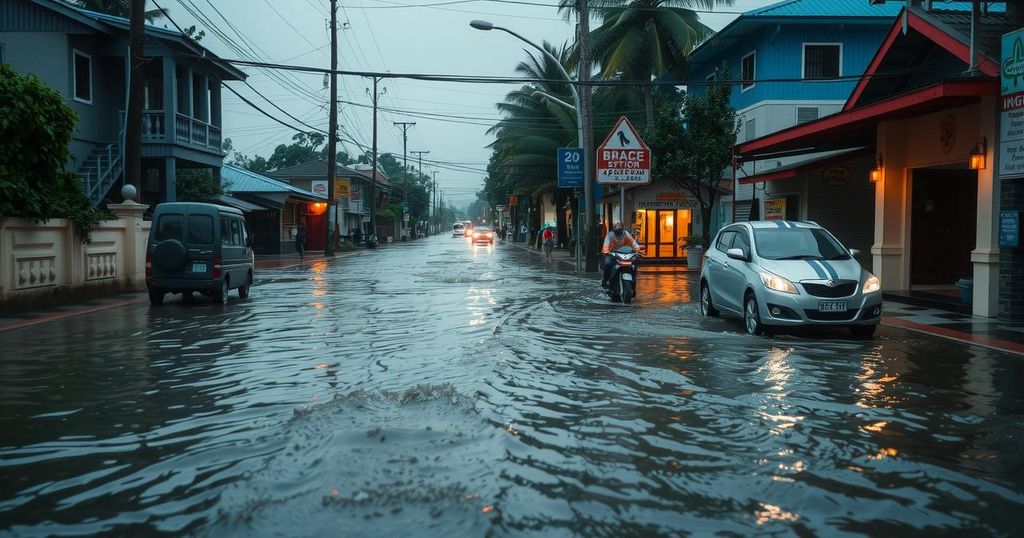Devastating Impact of Tropical Storm Toraji on the Philippines

Tropical Storm Toraji has caused severe flooding in the northern Philippines, with winds up to 80 mph and rainfall affecting Cagayan province. This marks the fourth major storm in three weeks, leading to widespread evacuations of nearly 1,700 individuals from vulnerable areas. The Philippines faces another storm, Ofel, shortly after Toraji, raising concerns over disaster preparedness and response amid increasing storm frequency.
Tropical Storm Toraji, locally referred to as Nika, has caused widespread devastation in the northern Philippines, triggering significant flooding following its landfall on Monday morning near San Agustin in Isabela. With maximum sustained winds reaching 80 mph and gusts exceeding 110 mph, Toraji released between 7 and 15 inches of rain in Cagayan province, leading to dangerous conditions. The Cagayan River’s water levels surpassed the critical threshold of 11 meters, prompting urgent evacuation measures in flood-prone areas. Approximately 561 families have been displaced and are seeking refuge in village halls, schools, or with relatives as they await further storms, including the anticipated Ofel, poised to strike the region soon. This unusual weather pattern has seen the Philippines experience five major storms in less than a month. The country, typically resilient to typhoons with an average of 20 tropical cyclones annually, faces increasing challenges due to successive storms. Other recent storms, including Tropical Storm Kristine, Super Typhoon Leon, and Tropical Storm Marce, have compounded the impact, displacing over 4 million individuals across numerous provinces. Local authorities, supported by government agencies like the Philippine Atmospheric, Geophysical and Astronomical Services Administration (PAGASA), are working diligently to manage the crisis and ensure the safety of affected populations.
The Philippines is located in a region frequently affected by tropical cyclones, which bring heavy rainfall and strong winds. The country experiences an average of 20 tropical storms each year, often resulting in severe flooding and displacement. The recent surge in storm activity, including Tropical Storm Toraji and others, raises concerns about disaster preparedness, infrastructure resilience, and the humanitarian response. Events such as these highlight the vulnerability of certain regions to natural disasters and the importance of timely evacuations and relief efforts to protect the population.
The recent flooding from Tropical Storm Toraji underscores the devastating impact of frequent tropical cyclones on the Philippines, where communities face significant challenges in disaster preparedness and response. With another major storm, Ofel, anticipated, local authorities are focused on ensuring the safety of residents and mitigating further losses. This situation calls for increased attention to strategic planning and investment in infrastructure to withstand the effects of climate change and natural disasters in the future.
Original Source: www.foxweather.com







